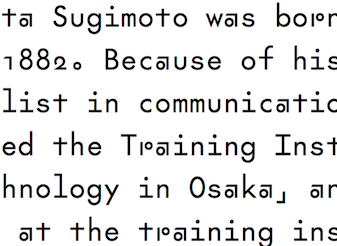TYPE DESIGN INFORMATION PAGE last updated on Sat Jun 22 22:35:36 EDT 2024
FONT RECOGNITION VIA FONT MOOSE
|
|
|
|
Kyota Sugimoto
Kyota Sugimoto (1882-1972) was a Japanese inventor who developed the first practical Japanese typewriter. He received the Blue Ribbon Award and the Small Asahi Ribbon. Out of the thousands of kanji characters, Kyota's typewriter used 2,400 of them. The following description of his carrerr and achievements is taken from Kris Sowersby's page on the occasion of the publication by Kris Sowersby, in 2018, of a monospaced version of Futura called The Future Mono. Kyota Sugimoto was born in Okayama prefecture in 1882. Because of his desire to become a specialist in communication technology, he entered the Training Institute for Communication Technology in Osaka, and completed his studies at the training institute in 1900. At that time, typewriters were already commonly used in Europe and America, but no practical type of typewriter had been developed yet for the Japanese language, which would make it possible to write Japanese (Kanji) without using a pen. After he completed his studies at the training institute, Kyota Sugimoto started working in the letterpress technology field, and then turned his attention to development of a typewriter for text in Japanese. At that time, typewriters which could be used to write Japanese utilized characters arranged either on a cylindrical surface or on an arc-shaped surface, but either way only a few characters were available. In order to really adapt typewriters to kanji, which has a huge number of characters, Kyota Sugimoto carefully considered the nature of this writing system, including the frequency of use of characters used in public documents. The 2,400 characters chosen as a result were arranged by classification on a character carriage, and the chosen character was raised by a type bar that could move forward and backward and left and right. The character was then typed against a cylindrical paper supporter. He obtained the patent rights to the Japanese typewriter that he invented, first in Japan (1915, Patent No. 27877) and somewhat later in the USA (1917, Patent No. 1245633). This invention amounted to an epoch making design on which current typewriters for Japanese are based, contributing greatly to efficient processing of documents and creation of different types of documents. In year 1953 he was decorated with the Blue Ribbon Award, and in the year 1965 he received the Small Asahi Ribbon Award. He died in the year 1972. Until the popularization of word processor technology, the Japanese typewriter contributed greatly to increased efficiency of document preparation at Japanese companies and government offices. |
EXTERNAL LINKS |
| | |
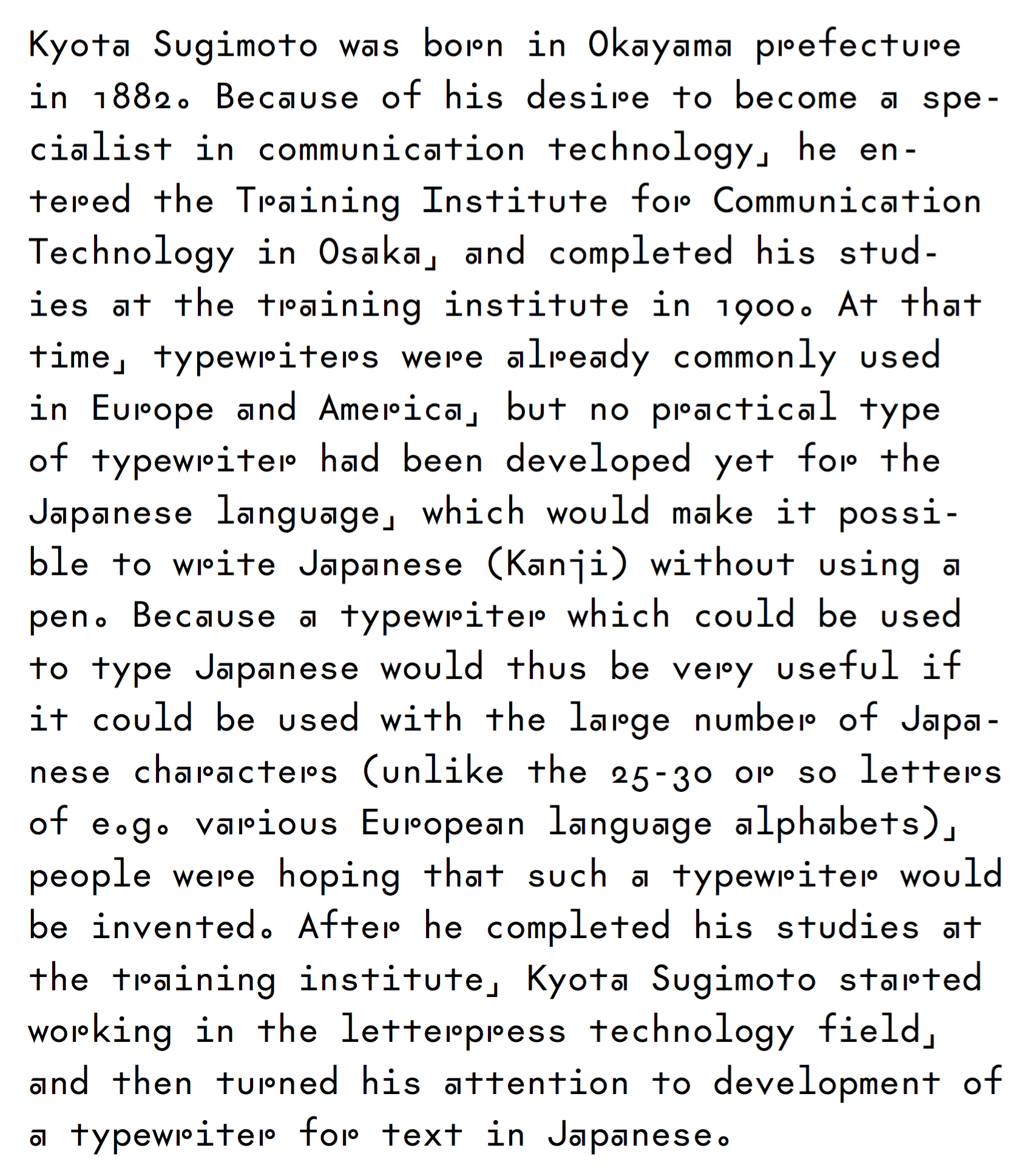
file name: Kris Sowersby The Future Mono01 2019
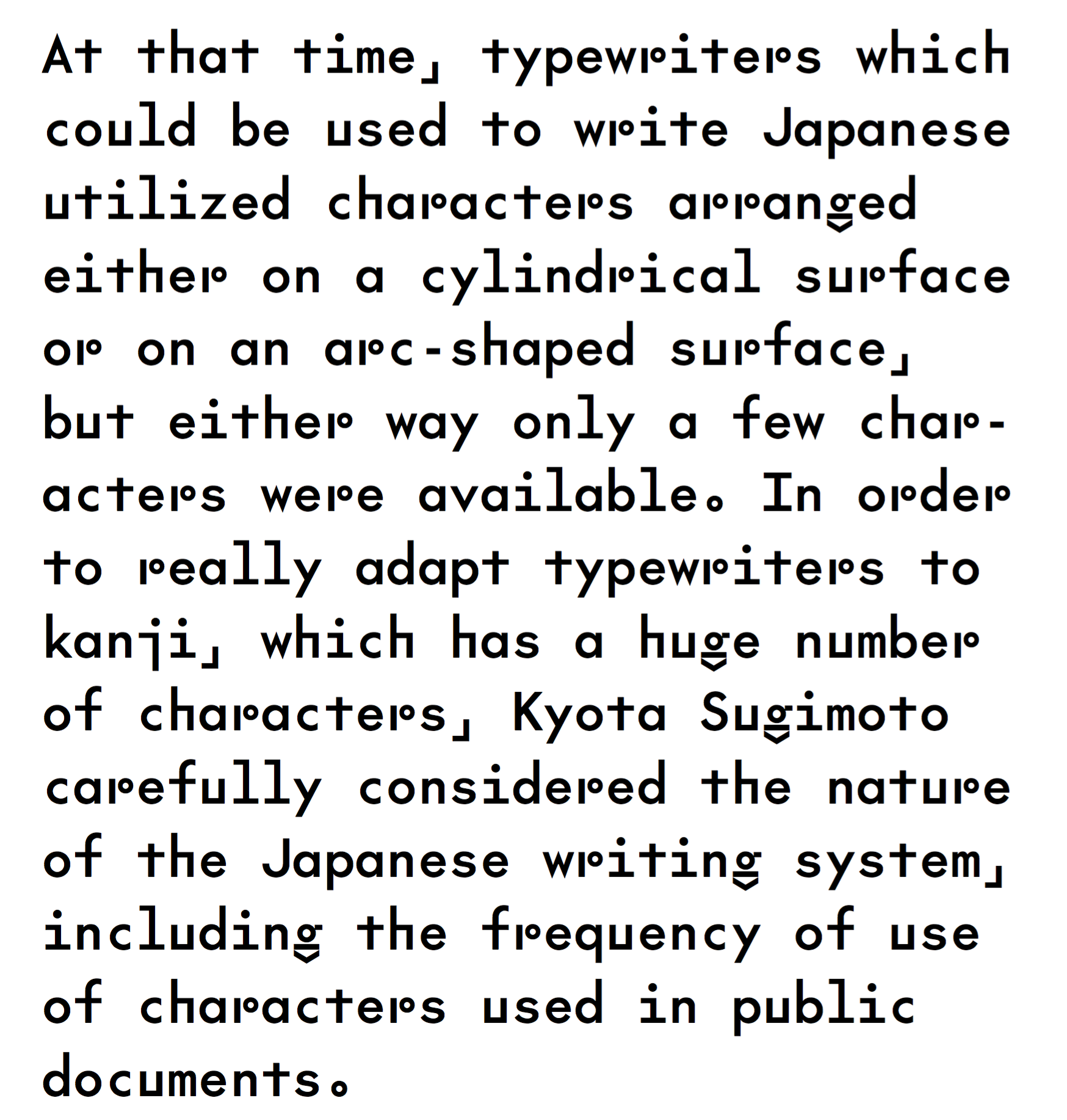
file name: Kris Sowersby The Future Mono01 2019
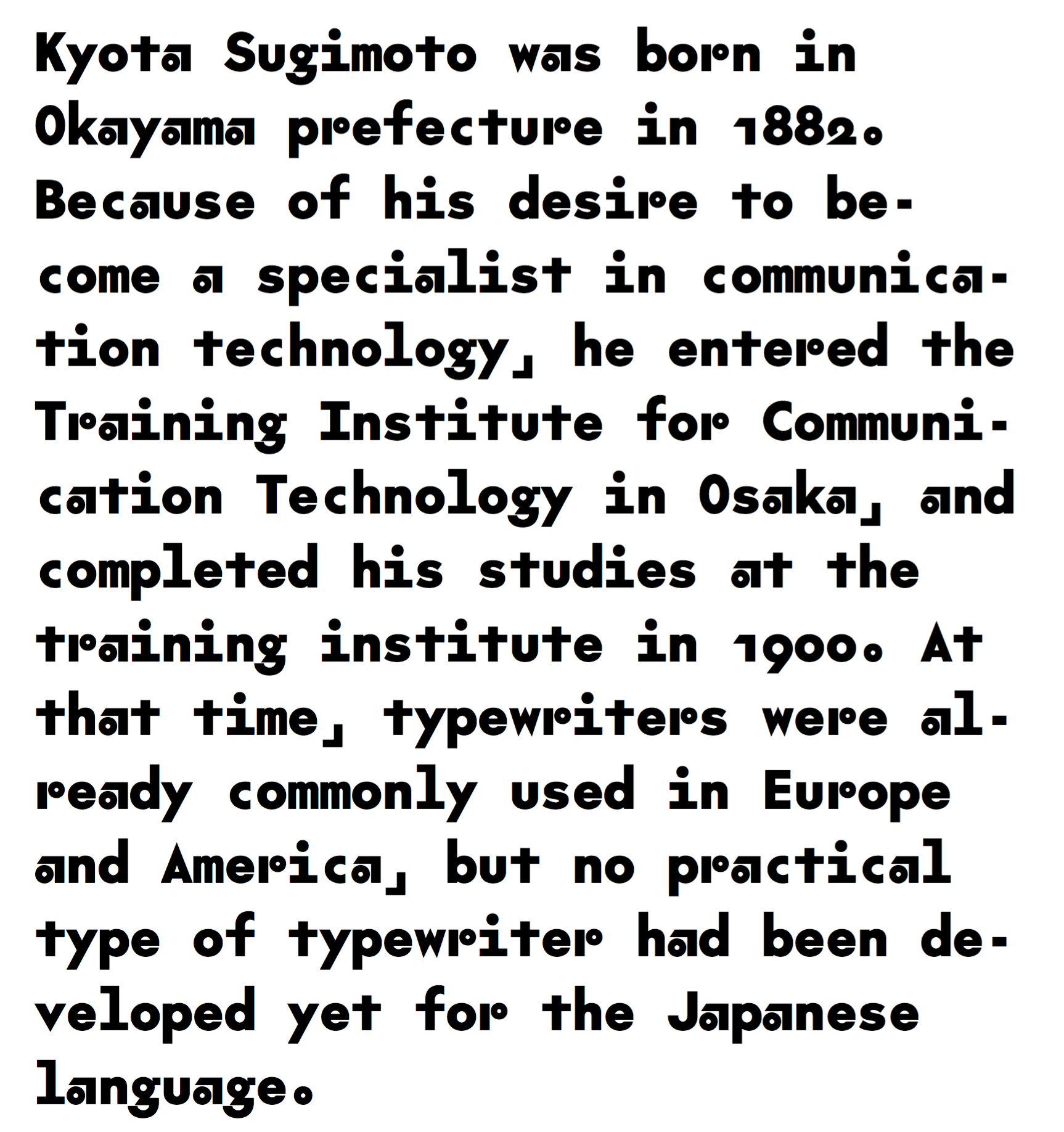
file name: Kris Sowersby The Future Mono01 2019
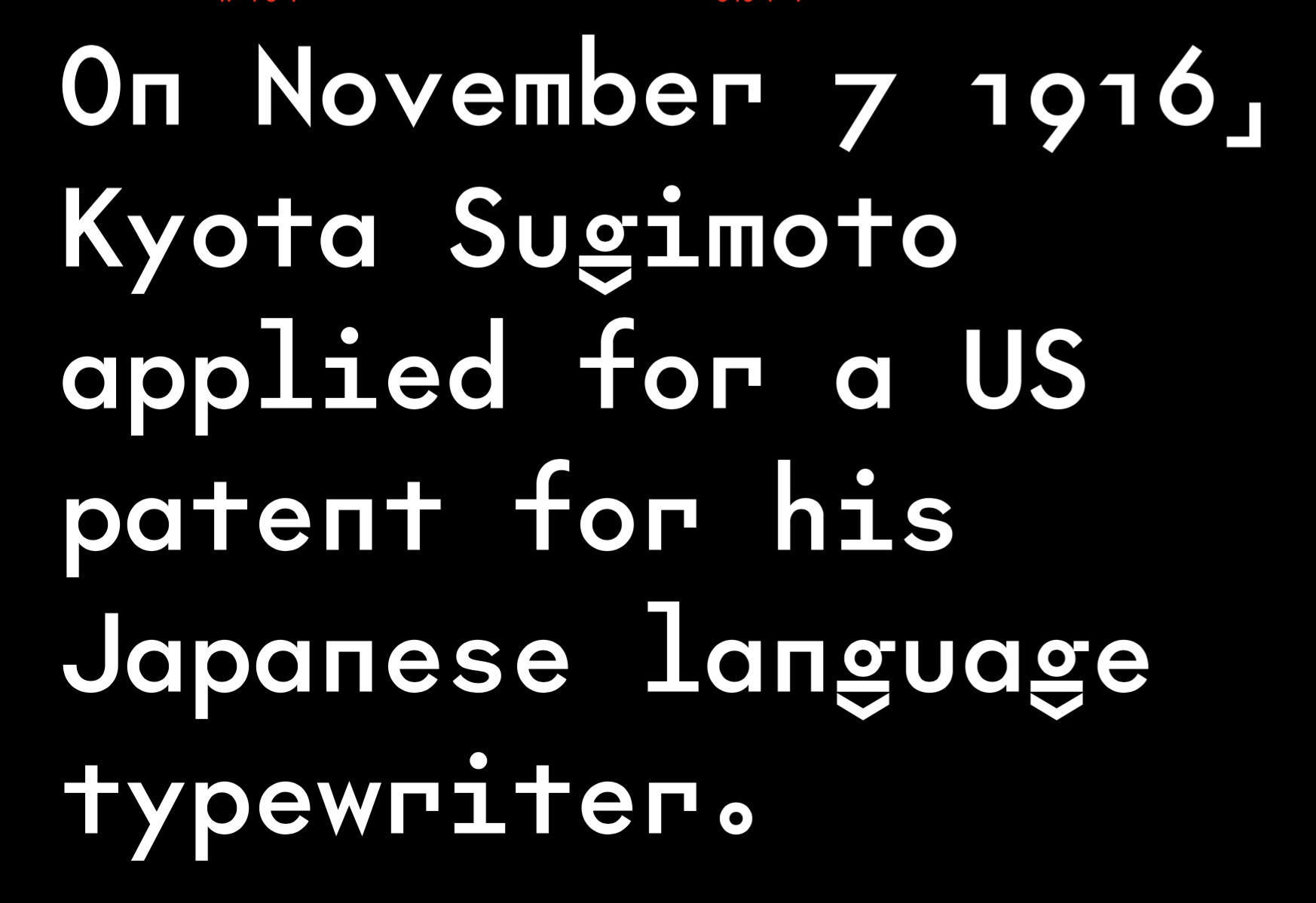
file name: Kris Sowersby The Future Mono01 2019

file name: Kris Sowersby The Future Mono01 2019
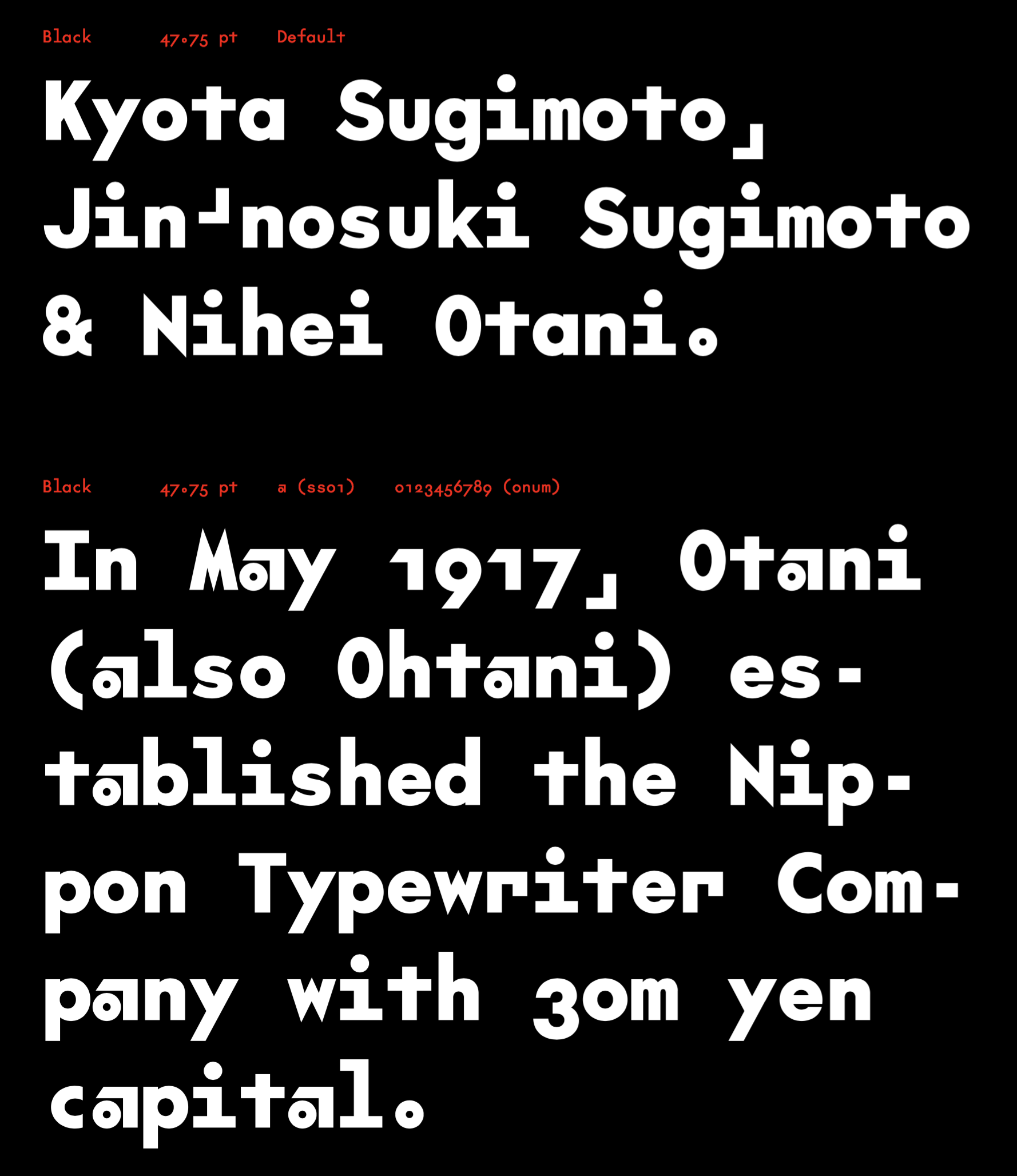
file name: Kris Sowersby The Future Mono01 2019
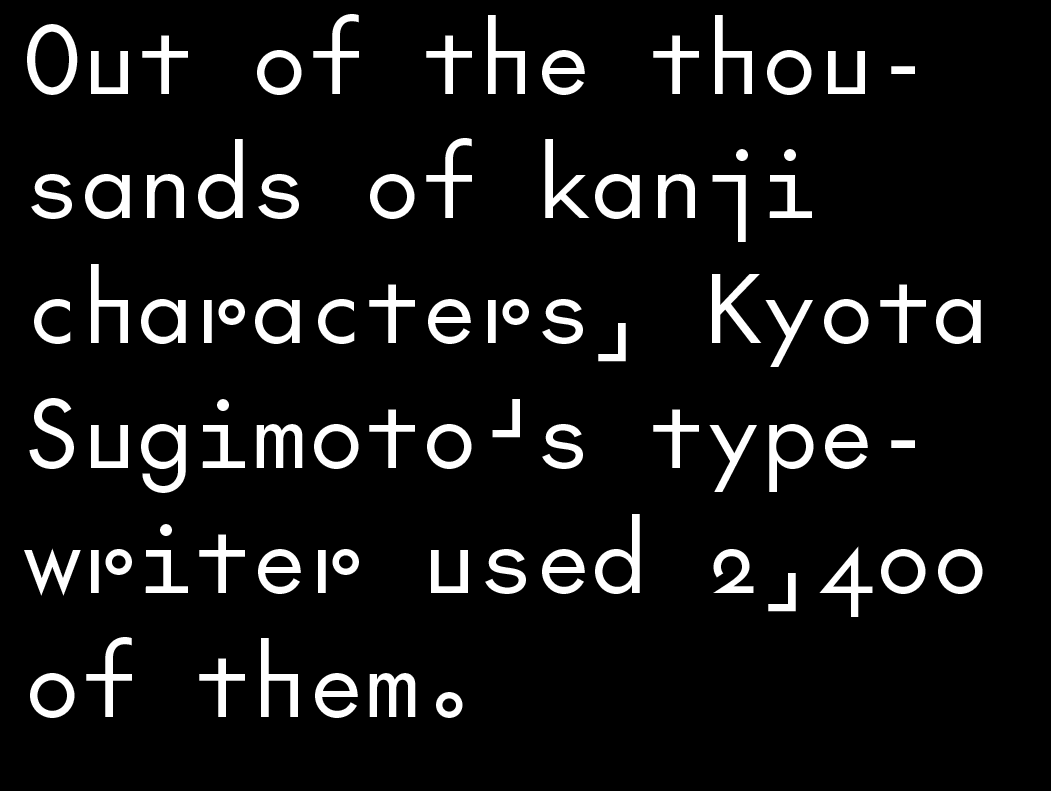
file name: Kris Sowersby The Future Mono01 2019
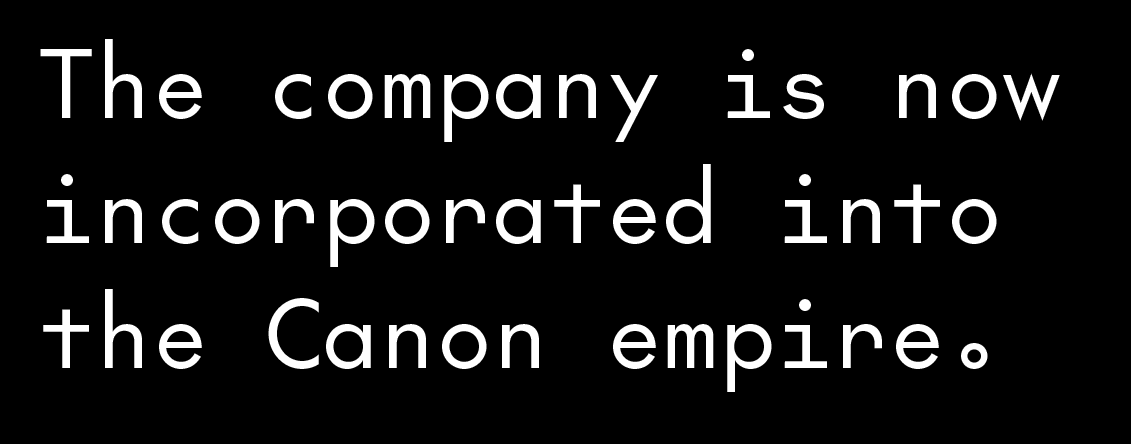
file name: Kris Sowersby The Future Mono01 2019
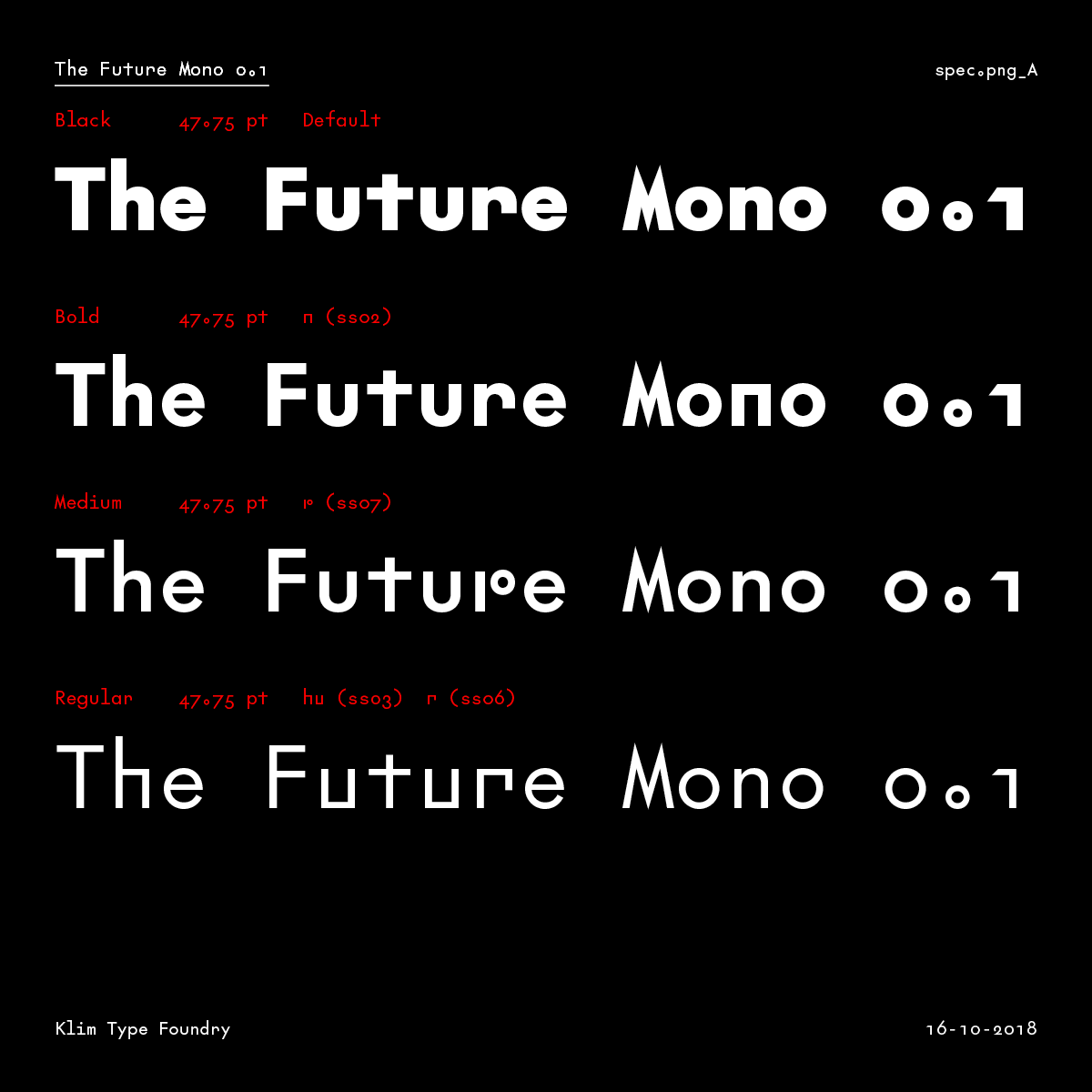
file name: Kris Sowersby The Future Mono01 2019
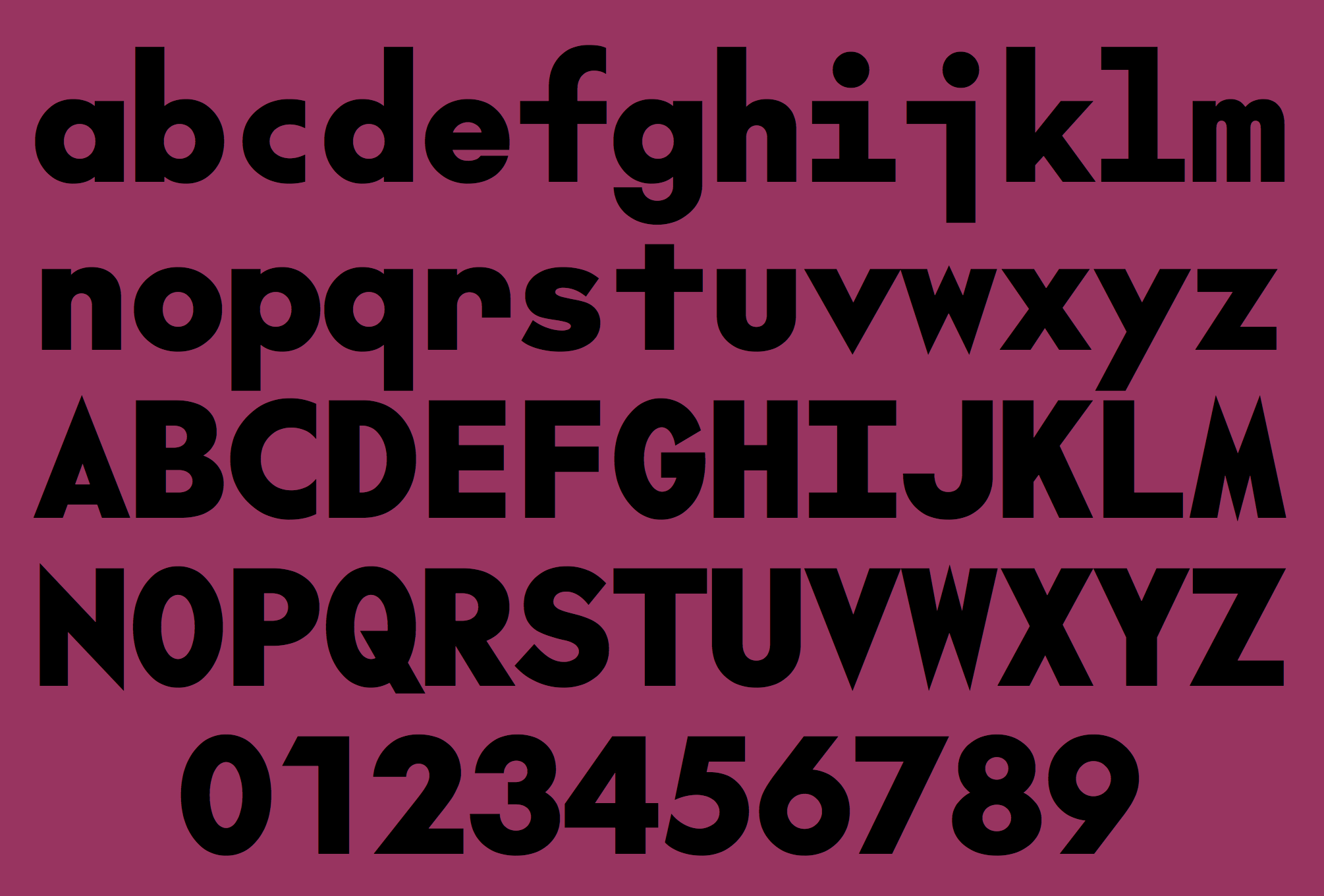
file name: Kris Sowersby The Future Mono01 Black 2019

file name: Kris Sowersby The Future Mono01 Black 2019
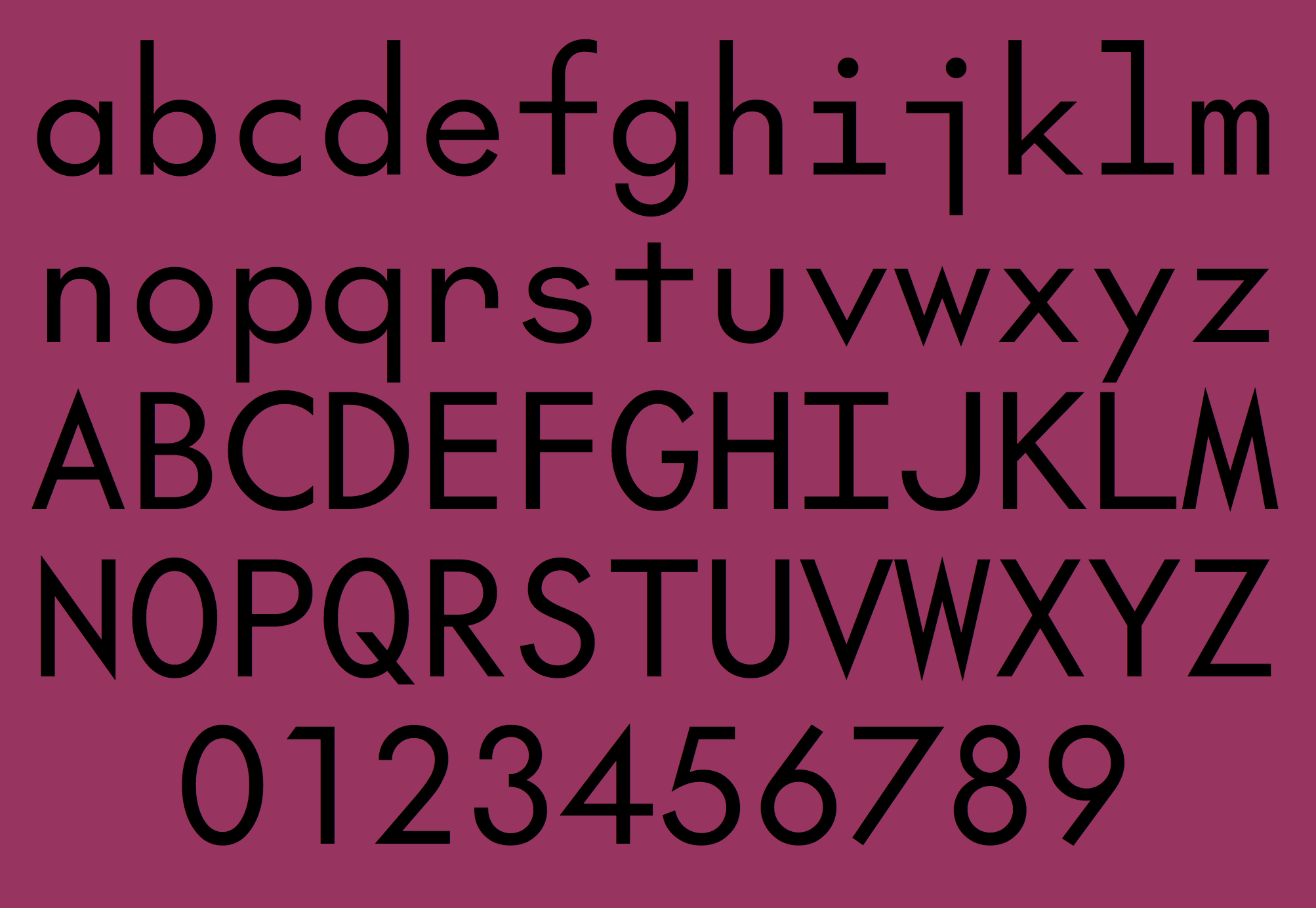
file name: Kris Sowersby The Future Mono01 Regular 2019
| | |
|
Luc Devroye ⦿ School of Computer Science ⦿ McGill University Montreal, Canada H3A 2K6 ⦿ lucdevroye@gmail.com ⦿ http://luc.devroye.org ⦿ http://luc.devroye.org/fonts.html |

